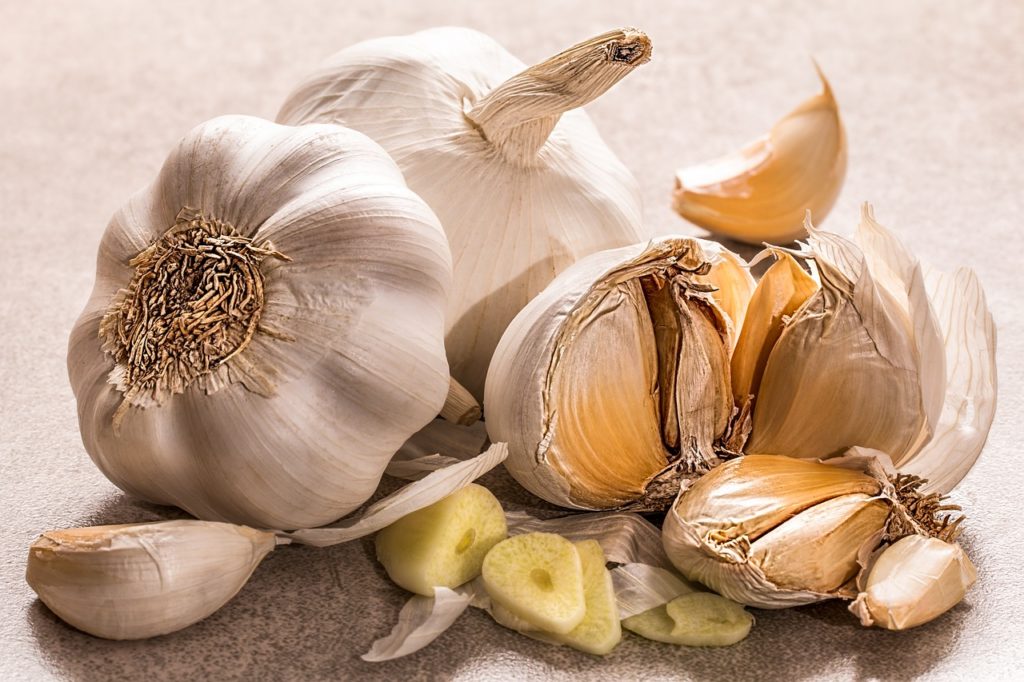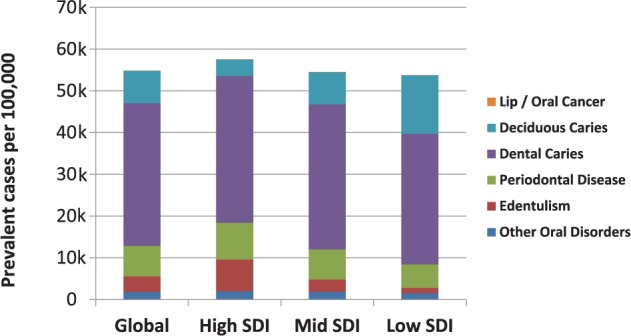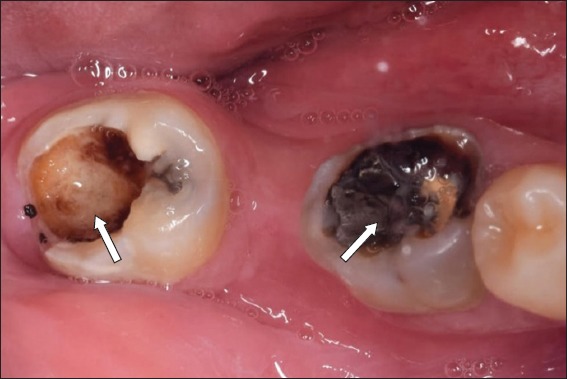A 2019 research shows that 35% of people globally have untreated dental caries. Periodontal disease (gum disease) and dental pulp inflammation due to tooth decay (dental caries) are the most common causes of toothache.1
2018 statistics show that 92% of people between 20 and 64 years have dental caries and 26% have untreated dental issues.
The pain can be mild or severe and may take your comfort and sleep away. If you experience tooth pain for more than a day, you should seek dental care.
It would be best to see a dentist when you have any dental issue, but here are some home remedies for toothache you may use for dental emergency as you seek an appointment with your healthcare professional.
Ice massage
A medically reviewed study shows that ice massage can decrease the intensity of tooth pain by 50%2. And that there was a significant difference in the pain reductions caused by ice and tactile massage.
Ice will numb the nerves in the tooth region, and the pain will subside. A study shows that ice is used as palliative pain control in several dental clinics.3
There are several ways to use ice to calm your tooth pain. You may wrap the ice in a cloth, apply it to the affected area, or gargle ice-cold water.
Rinsing your mouth with salt water
A 2022 medical publication shows that gargling salt water can alleviate tooth pain. Salt water acts as a natural disinfectant and may help heal wounds on the gums.
This remedy is not for children4. When using this method, take half a teaspoon of salt, mix with a glass of warm water, and then use it as a mouth wash.
The wash will remove loosen food particles that are stack between the teeth which might catalyze your dental pain.
Warm salt water rinse is also a apart of other natural remedies for abscessed tooth and other infections in the mouth cavity like tonsillitis and swollen gums.
Hydrogen peroxide rinse
In a medical study, patients with post-extraction pain used 6% of hydrogen peroxide, and there was a significant relief5. Hydrogen peroxide is also anti-inflammatory and can kill bacteria that cause tooth decay and gum disease.
When using hydrogen peroxide rinse, be careful not to swallow the content and rinse your mouth with water.
Wellness professionals warn that ingestion of hydrogen peroxide may cause irritation of the GIT and cause nausea6.
Thyme essential oil
A 2013 peer-reviewed study poses that thyme can effectively control microbial plaque that causes toothache. This essential oil has natural anesthetic and antibacterial properties that provide temporary relief.
You may apply thyme directly on the infected area or use it as a mouth rinse. It’s best to dilute the oil with a little water, add a few drops on a cotton ball, and hold it on the affected tooth.
Wheatgrass juice
Clinical trials done in 2015 found that wheatgrass juice has medicinal properties and can induce synergistic benefits to relieve pain. It’s also packed with antioxidants and nutrients that are healthful to your body.
A study further proves that wheatgrass contains anti-oxidative properties and is effective and safe for human illnesses6.
Guava leaves

A 2017 study shows that guava shares the same effects as gallic acid, vescalagin, catechin and quercetin, and other pain-relieving substances. Its been used since time memorial as a folk remedy for painful tooth.
Guava leaves have excellent, antimicrobial, antiplaque, antibacterial and antioxidant activities that may help treat toothaches7.
Guava leaves are a safe adjacent treatment for toothache that you may adopt at home. You can use the leaves in making herbal tea then gently floss in on the sore tooth.
Eugenol / Clove oil
A 2019 publication shows that clove oil is beneficial in abdominal aches, nausea, and cough. It’s also found occasionally in fluoride toothpaste to alleviate painful gums and toothache.
Eugenol is a natural antiseptic and can reduce inflammation. There are several ways you can use cloves to treat toothache treatment.
The easiest way is to put clove oil in a glass of water and use it as a mouth rinse or add clove oil in a cotton ball and then applies to the affected tooth.
Another way you may use clove oil is to apply a few drops directly on the affected area.
Peppermint tea bags
A 2013 medically reviewed study shows that peppermint tea is an effective antiseptic solution that can kill oral pathogens. It contains mild numbing properties that may help soothe toothache.
You can choose to use warm or cold tea bag for this treatment. Put the tea bags in the freezer if you use the cold option. Do not use hot tea bags for this therapy.
Sweet potato leaves
Medical studies show that potato leaves contain antimutagenic, antiulcer, wound healing, and antidiabetic properties8.
A study shows that sweet potato leaves can be used on open cavities to treat toothache9. You may make a mouth wash from sweet potato leaves steamed in water.
Garlic

A 2011 study shows that garlic’s allicin component has therapeutic effects on several human disorders.
In a peer-reviewed study, a patient used crushed garlic on an infected tooth, and there was some relief from the pain, except there was a little garlic burn you should consider in this treatment10.
Garlic is a pain reliever besides its antimicrobial and anti-inflammatory properties. You can put some crushed fresh garlic paste in a cloth and apply it to your tooth.
Moreover, you can soak a cotton ball in garlic oil and hold it on the affected area.
More research is required on the effects of garlic on pregnant women, breastfeeding mums, and infants11.
Vanilla extract
Peer reviewed studies show that vanilla extract has high antioxidant properties and up to 60% aqueous ethyl alcohol, which may help soothe toothache12.
Vanilla is a natural anti-inflammatory essential dessert in western culture. You may put a small amount of vanilla on a cotton swab and then apply it to the infected tooth. It can help numb the pain in the tooth.
Brushing with bamboo salt
A 2015 research shows that brushing with bamboo salt provides potential gingival protection. It can help combat inflammation.
A 2022 publication lists bamboo salt among the supportive home remedies for toothache relief that offers alternative or adjacent treatments.
What is the fastest way to stop a toothache pain at home?
Cold compress
When toothache results from thermal stimuli, you may use a cold compress on the infected tooth. The ice pack will numb pain and reduce swelling on the painful area.
The cold temperatures will constrict the blood vessels reducing blood flow to the affected tooth. This will provide temporary pain relief especially for sensitive teeth.
If you don’t have an ice pack, use wet tea bag instead for similar results.
Antibiotics
Research shows that you should only use antibiotics when the pain is accompanied by signs of the rapid spread of infection. A tooth abscess may cause pain in these incidences; you can use antibiotics.
Over-the-counter medication for temporary pain relief
Pain medication are anti-inflammatory and drugs that will help you get rid of the pain faster. However, painkillers are not always the best treatment option for any medical condition.
In emergency cases you may use this immediate treatment options to curb oral discomfort, reduce swelling and blunt pain signals.
What is the best painkiller for dental pain?
- Ibuprofen
- Advil
- Motrin
- Naproxen
How can I stop tooth pain at night at home?
Head elevation
Lying flat will increase the blood flow into the head region, aggravating your pain. Consider raising your head when you sleep to reduce the blood flow to the head region and reduce the tooth pain.
In most cases, headaches accompany toothache. Therefore, raising your head will reduce severe headaches due to pains.
Avoid acidic foods at night
A 2020 study found that acidic carbonated drinks are associated with erosive tooth wear. Enamel dissolution is significantly affected by titratable acidity in several acidic foods.
Acidic foods will also irritate the cavities where the toothache results from a tooth abscess.
Try acupressure
Results of a 2014 study show that acupuncture analgesia could be an adjustment pain control for patients with acute dental pain. In a sample of 120 participants, all recorded pain relief after acupuncture exercises.
What are the common causes of toothache?
According to American dental association, the most common causes of dental issues are:
- Periodontal diseases
- Dental cavities
- Broken tooth due to physical injuries
- Oral wounds due to tooth abscess
- Repetitive motions like chewing
- Irritation of the gums from food
- Tooth extraction or removal
A combined bar graph shows dental disorders and their prevalence an image from PubMed scientific research database in 2022.

When to see a dentist
These toothache home remedies here are for temporary relief to reduce the toothache pain. But, it would help if you see a dentist when you see the following symptoms.
- When the aching tooth is cracked
- when the pain is consistent for more than two days
- If the toothache comes with other signs of infection
- When you have other dental health conditions
Summary
Handling toothache is not easy at home. You should see a dentist or any qualified healthcare provider for right treatment procedures before using these home remedies for toothache.
However, when you are still waiting for your appointment or need to fix the pain immediately, here are toothache home remedies that will help you soothe the aching tooth.


Pingback: Home remedies for tooth ABSCESS | GILEAD THERAPY
Pingback: Home remedies for abscess | GILEAD THERAPY
Pingback: How to whiten yellow teeth naturally | GILEAD THERAPY